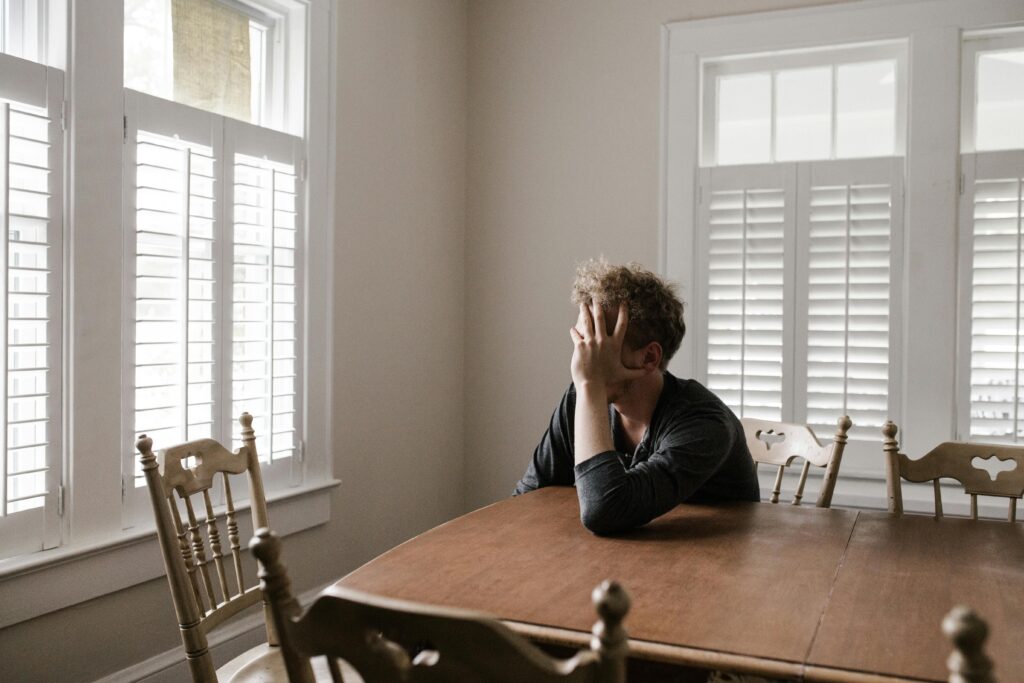Imagine waking up with your heart already racing. You haven’t gotten out of bed, and yet dread looms over the day. You rehearse conversations you haven’t had, worry about tasks not yet started, and feel the familiar ache of hopelessness or fear. These experiences are not rare. In fact, they’re increasingly common—and treatable.
Behavioral therapy offers practical, evidence-based solutions for adults navigating mental health challenges like anxiety, depression, trauma, addiction, and more. While it was once thought of as a tool mostly for children or developmental disorders, behavioral therapy has evolved into a cornerstone of adult mental healthcare, transforming lives through real, observable change.
In this blog, we’ll explore how behavioral therapy works, why it’s uniquely suited for adult mental health issues, and the wide range of conditions it treats effectively—from chronic stress to panic attacks to addiction relapse. Whether you’re exploring treatment for the first time or considering a change in approach, this guide breaks down how behavior-based techniques can help you regain control, confidence, and calm.
What Is Behavioral Therapy? A Refresher
Behavioral therapy is rooted in the idea that all behavior is learned—and what is learned can be unlearned or reshaped. Instead of focusing only on what you feel or why you feel it, behavioral therapy targets what you do—your habits, routines, reactions, and coping strategies.
The approach is grounded in classical and operant conditioning (think Pavlov’s dogs and Skinner’s reinforcement theories), and focuses on:
-
Identifying and modifying maladaptive behaviors
-
Creating structured, goal-driven interventions
-
Reinforcing healthy habits and coping skills
-
Replacing avoidance with gradual exposure and action
For adults dealing with overwhelming emotions, recurring stress patterns, or self-sabotaging behaviors, this kind of action-first therapy can offer immediate relief and long-term transformation.
Why Behavioral Therapy Is a Great Fit for Adults
While insight-oriented therapies (like psychodynamic or narrative therapy) explore the origins of distress, behavioral therapy helps adults focus on what’s happening now and what can be changed next.
Here’s why it resonates with adult clients:
-
It’s pragmatic and goal-oriented.
Adults juggling jobs, families, and responsibilities often appreciate a focused, efficient path to relief. -
It empowers self-efficacy.
Behavioral therapy teaches clients to become their own problem-solvers by learning new skills and tracking progress. -
It offers measurable results.
Clients can see behavioral change in real time—whether it’s fewer panic attacks, better sleep, or reduced avoidance. -
It addresses functional impairment.
Many adults seek therapy when mental health begins interfering with work, relationships, or physical health. Behavior therapy zeroes in on these impairments quickly. -
It complements medical treatment.
Behavioral interventions often work alongside medication, enhancing outcomes for anxiety, depression, and other disorders.
Common Behavioral Therapy Techniques Used with Adults
Let’s break down the most impactful behavioral therapy techniques used to treat adult mental health challenges:
1. Behavioral Activation
One of the most effective tools for depression, behavioral activation (BA) helps clients re-engage with life through pleasurable or meaningful activities—even if they don’t initially feel motivated.
How it works:
Depression often causes withdrawal and inactivity, which deepens the sense of hopelessness. BA flips the script: you schedule small, manageable activities, then use those experiences to rekindle energy and purpose.
Used For:
-
Major depressive disorder
-
Burnout
-
Grief
-
Chronic fatigue syndrome
2. Exposure Therapy
This technique gradually and safely exposes individuals to the situations, thoughts, or feelings they fear, helping reduce avoidance and emotional reactivity over time.
Types of exposure:
-
In vivo: Real-life situations (e.g., driving, public speaking)
-
Imaginal: Visualizing feared events or memories
-
Interoceptive: Triggering feared bodily sensations (e.g., racing heart)
Used For:
-
Panic disorder
-
PTSD
-
Social anxiety
-
Specific phobias
-
OCD
3. Habit Reversal Training (HRT)
HRT teaches clients to replace compulsive or problematic behaviors with alternative actions that serve the same function but are less harmful.
How it works:
After increasing awareness of the problematic behavior (like nail biting or skin picking), clients learn competing responses, such as clenching fists or deep breathing, along with reinforcement strategies.
Used For:
-
Body-focused repetitive behaviors (BFRBs)
-
Tic disorders
-
Smoking cessation
4. Token Economies and Reward Systems
While more common in structured settings like residential programs, some adult clients benefit from reward-based strategies—earning points, tokens, or self-created incentives for healthy behaviors.
Used For:
-
Substance use recovery
-
Diet and exercise adherence
-
Motivation and goal tracking
5. Behavioral Contracting
This technique involves a written agreement between client and therapist (or between partners/family members) that outlines specific behaviors and expected consequences or rewards.
Used For:
-
Couples therapy
-
Addiction recovery
-
Workplace and interpersonal conflict resolution
How Behavioral Therapy Helps with Anxiety
Let’s take a closer look at anxiety—a condition that affects more than 40 million adults in the U.S. alone, according to the Anxiety and Depression Association of America (2023).
Behavioral therapy helps in several key ways:
-
Breaks the avoidance cycle. Avoiding feared situations provides short-term relief but long-term distress. Exposure retrains the brain.
-
Rebuilds confidence. Each step taken toward the source of anxiety becomes proof that the person can cope—without escaping.
-
Normalizes fear responses. Interoceptive exposure helps desensitize the body’s fear response (e.g., rapid heartbeat, dizziness), decreasing panic.
-
Replaces safety behaviors. Clients learn to let go of crutches (e.g., always carrying medication, texting constantly) that reinforce fear.
Example:
Karen, a 42-year-old with panic disorder, feared driving over bridges. Her therapist used graded exposure, beginning with videos of bridges, then riding in the car, and eventually driving alone. Over 12 sessions, Karen not only drove across her feared bridge but felt proud doing it.
Behavioral Therapy and Depression: Getting Unstuck
Depression doesn’t always look like sadness. For many adults, it manifests as numbness, disconnection, and low motivation. Behavioral therapy addresses this with action-oriented tools:
-
Behavioral activation to schedule mood-boosting activities
-
Mastery-based tasks to rebuild self-efficacy
-
Social reconnection plans to combat isolation
-
Sleep and hygiene routines to reset circadian rhythms
A 2022 study in JAMA Psychiatry found that behavioral activation was as effective as antidepressants in treating moderate depression—and with fewer side effects.
Behavioral Therapy for Trauma and PTSD
While trauma is often addressed with EMDR or narrative approaches, behavioral therapy provides a stabilizing foundation—especially for clients not ready to revisit the trauma itself.
Key tools include:
-
Exposure with relaxation techniques
-
Routine scheduling and grounding
-
Sleep hygiene and safety plans
-
Avoidance tracking and reduction
Therapists often blend behavioral tools with cognitive or somatic therapies to ensure clients feel empowered, not overwhelmed.
Managing Anger and Impulsivity with Behavioral Tools
For adults who struggle with irritability, reactivity, or explosive anger, behavioral therapy offers practical strategies:
-
ABC tracking: Identify triggers (Antecedents), Behaviors, and Consequences
-
Timeout protocols: Create space between trigger and reaction
-
Reinforcement for calm responses
-
Problem-solving training to replace aggressive patterns
Example:
Miguel, 38, used behavioral contracting with his partner to improve conflict resolution. When he used a timeout and journaling instead of yelling, he earned small relational rewards, reinforcing the change.
Behavioral Therapy for Addiction and Relapse Prevention
Substance use recovery is often behavioral at its core: people develop habits and triggers around their use, and these habits must be unlearned and replaced.
Behavioral strategies include:
-
Functional behavior analysis to understand what fuels cravings
-
Trigger avoidance and substitution
-
Contingency management with reward systems for sobriety
-
Routine-building and scheduling to reduce idle time
-
Relapse rehearsal and prevention plans
A 2024 meta-analysis in Addiction Science & Clinical Practice found that clients who received behaviorally-based interventions were 60% less likely to relapse after 6 months than those without them.
Behavioral Therapy and Adult ADHD
Adults with ADHD often face difficulty with time management, emotional regulation, and organization. Behavioral therapy offers tools like:
-
Task chunking
-
Timed rewards and reinforcement
-
Environmental restructuring
-
Distraction blocking strategies
-
Accountability tracking systems
Unlike medication, behavioral strategies help clients function more effectively in daily life, and improve long-term outcomes.
What Behavioral Therapy Looks Like in Practice
A typical behavioral therapy session might include:
-
Behavior review from the past week
-
Progress tracking (e.g., behavior log or habit chart)
-
Skill teaching (e.g., exposure, relaxation, problem-solving)
-
Practice planning (e.g., what to do between sessions)
-
Reinforcement of successes and troubleshooting of setbacks
Behavioral therapists often assign homework—but in the form of real-life experiments and actions that reinforce learning.
Behavioral Therapy and Telehealth
Behavioral therapy translates seamlessly to telehealth:
-
Digital tools (e.g., habit trackers, worksheets) support homework
-
Therapists can assign real-time challenges (e.g., exposure tasks)
-
Clients receive structured, skill-focused care with remote flexibility
A 2023 review in Telehealth & Behavioral Practice found comparable outcomes between in-person and virtual behavioral therapy sessions, especially when clients were supported with digital reinforcement tools.
Who Is Behavioral Therapy For?
Great candidates for behavioral therapy include adults who:
-
Struggle with anxiety, avoidance, or panic
-
Are stuck in negative behavior loops (e.g., isolation, addiction, rage)
-
Prefer action and structure over exploration and insight
-
Need tools for specific challenges like ADHD, phobias, or depression
-
Want measurable, short-term results that build long-term change
Even clients with complex trauma or co-occurring disorders can benefit when behavioral therapy is combined with other modalities.
Actionable Takeaways
-
Behavioral therapy helps adults change actions first, leading to shifts in mood, motivation, and mental clarity.
-
It’s particularly effective for anxiety, depression, addiction, PTSD, ADHD, and anger issues.
-
Structured techniques like behavioral activation and exposure offer real-time relief from emotional distress.
-
Functional behavior analysis identifies triggers, helping clients build targeted interventions.
-
Clients learn to reward themselves, develop new routines, and break old patterns.
-
Telehealth delivery is effective, especially when supported with digital tools and consistent follow-up.
-
Behavioral therapy is often short-term and goal-focused, helping busy adults get faster results.
-
It complements medication and insight-based therapy, making it a powerful component of a holistic care plan.
-
Behavioral change improves self-efficacy, empowering clients to become active agents in their own healing.
-
Everyone can benefit from behavioral tools, even if used alongside other therapeutic frameworks.
Renew Health: Your Partner in Behavioral Therapy for Adults
Phone: 575‑363‑HELP (4357)
Website: www.renewhealth.com


